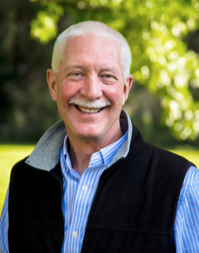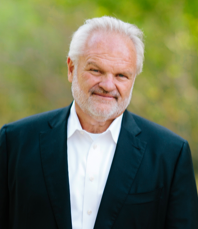Effective Leadership, Defined
March 29, 2019
 How do senior leaders, in their own words, describe the most effective leaders—the ones that get results, grow the business, enhance the culture, and leave in their wake a trail of other really effective leaders?
How do senior leaders, in their own words, describe the most effective leaders—the ones that get results, grow the business, enhance the culture, and leave in their wake a trail of other really effective leaders?
After surveying more than one million leaders worldwide, co-authors Robert (Bob) J. Anderson and William (Bill) A. Adams have drawn on their research to define leadership that works, that does not, that scales, and that limits scale, in their book SCALING LEADERSHIP: Building Organizational Capability and Capacity to Create Outcomes that Matter Most (Wiley; hardcover; January 29, 2019).
Below, Anderson and Adams answer questions about effective leadership.
What prompted you to write this book?
The foundation of this book is research into what senior leaders say to one another when providing written 360 feedback. The results were so compelling when presented to the leadership teams we work with, we just had to write a book about them.
There are any number of windows in this book that shed light into how senior leaders describe the kind of leadership that works and can scale, and the kind of leadership that does not and can not. We wrote our first book—Mastering Leadership—to elaborate a Universal Model of Leadership based on our learning from more than one million rater surveys in our database of 360-degree leader assessments. We used what we learned from that in-depth review to build the foundation of what great leadership looks like, and how anyone can become a better leader.
We wrote our latest book—Scaling Leadership—to provide leaders with a proven system for developing effective leadership throughout every level of their organizations. This, we believe, is essential for businesses of any size in every industry to grow and thrive today and in the future.
What does effective leadership look like?
What is so unusual about this book is that we (the authors) are not answering this question. We leave that to senior leaders. The reader gets to “listen in” on how they talk about this in the most intimate and important of conversations—providing another leader feedback on what will make them more effective.
When we look at what they say makes a leader more effective, and what leadership is really all about, the characteristics revealed go hand in hand with what it means to be a well-rounded, integral human being. At its very heart, leadership is all about building the deep relationships required to develop effectiveness in teams and to support the growth of other leaders.
Leaders who effectively transform their organizations are radically human. They lead vulnerably (learning alongside those they lead) and authentically. They are profoundly purposeful—the kind of person who brings something to the planet and who gives back—producing results that makes a difference in the world.
To read more on leadership, check out these Octane articles.
What are some of the key differences between Creative and Reactive leadership?
Reactive leaders lead from their own unique capability, tending to identify with certain strengths—overdeveloping them while under developing others. Reactive leaders emphasize caution over creating results, self-protection over productive engagement, and aggression over building alignment. These self-limiting leadership styles overemphasize the focus on gaining the approval of others, protecting oneself, and getting results through high-control tactics.
Creative leaders, on the other hand, are less self-centric and are much more about developing the capacity and capability of others and the organization. They are approachable and skillful in working with people, listen well, build high-performing teams, mentor and develop capability in others, and empower their people. Creative Leaders embody their vision calmly and with integrity and courage, and improve organizational systems.
In your book, you state that women are more effective leaders. How did you come to that conclusion?
In our research of 300 senior leaders from 237 companies in 29 industries and 6 countries, we found that women leaders are making a notable contribution to leadership in their organizations. And while women are underrepresented in the sample (62 percent men to 38 percent women, which is consistent with the ratio in our overall norm base), they are overrepresented in the High-Creative group (54 percent) and significantly underrepresented in the High-Reactive group (22 percent). In other words, senior women leaders are consistently rated as more Creative and less Reactive than are their male counterparts.
When we study our entire norm base, women are rated 15 to 20 percentile points more Creative than men. We know that’s not a surprise to women, but it’s not typically the reason why we pay so much attention to gaining diversity in our leadership.
The data shows that women lead more effectively than men, and we’ve been doing everything we can in our society for as many years to keep them out of leadership. Why? We wish we could explain it—we just don’t have a good answer to this troubling question.
If you’re not leading the way in your company by making leadership more inclusive and leveraging the full power and potential of female leadership, then you’re not doing your job. Stated even more strongly, we men can all learn from what women are bringing to leadership.
If readers took away one thing from reading your book, what do you hope it would be?
The Peter Principle has been revised. The High-Reactive, ineffective senior leaders we meet are as brilliant and competent as the High-Creative leaders. They are not meeting their level of incompetence. They are meeting their level of development. Their development has not kept pace with the expanded complexity of their roles. They need to develop into the kind of leader that can scale leadership. Everyone has the seeds within them to become truly great leaders, and to nurture great leadership in others. In these times of business volatility, uncertainty, complexity, and ambiguity, effective leadership is needed more than ever before.
 Robert J. Anderson has been a pace setter in the field of leadership development for over 30 years. He is the founder, chairman, and chief development officer of The Leadership Circle and Full Circle Group.
Robert J. Anderson has been a pace setter in the field of leadership development for over 30 years. He is the founder, chairman, and chief development officer of The Leadership Circle and Full Circle Group.

William A. Adams is co-founder and CEO of Full Circle Group and The Leadership Circle. Adams has over 30 years of experience as a trusted advisor to CEOs and their teams around the globe.